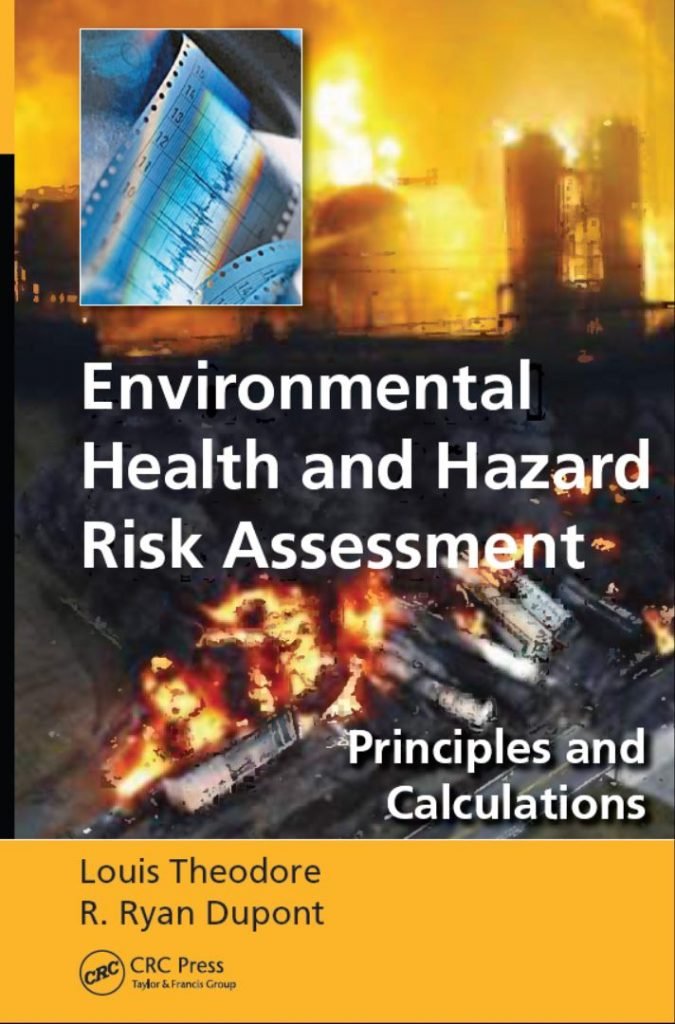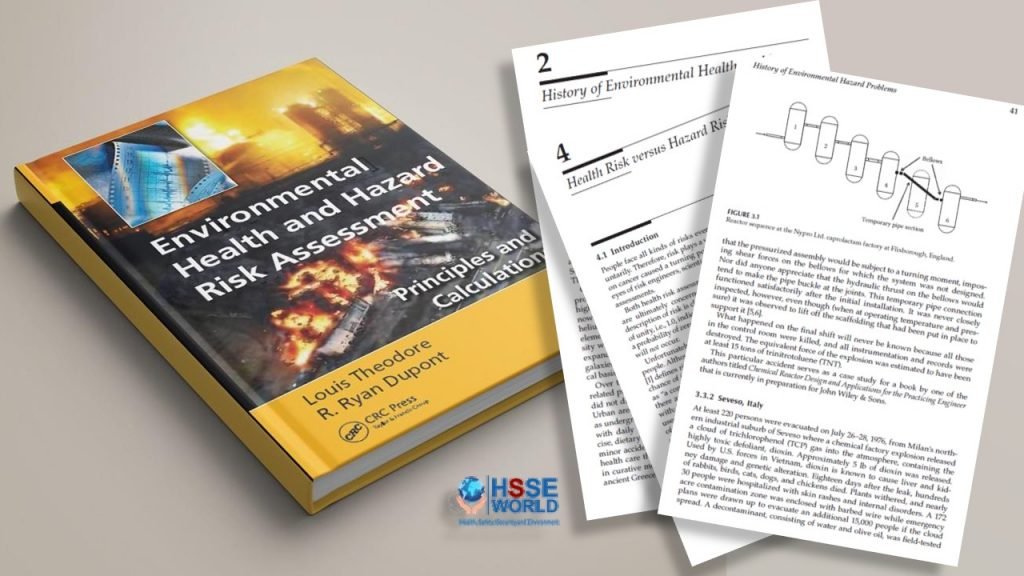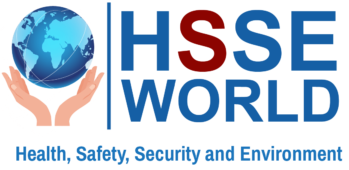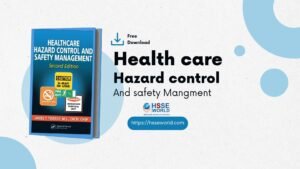E-Books: Environmental Health and Hazard Risk Assessment principles and calculations
5 min read Environmental health and hazard risk assessment principles and calculations by (CRC press) Louis Theodore and R. Ryan Dupont. Risk. Health risk. Hazard risk. Individual risk. Societal risk. Etc. Risk has surged to the forefront of numerous engineering and scientific areas of interest. Why? A good question. Some of the more obvious reasons include (not in the order of importance) the following:
1. Increased environmental health and safety legislation
2. The accompanying massive regulations
3. Regulatory fines
4. Liability concerns
5. Environmental activists and their organizations
6. Public concerns
7. Skyrocketing health-care costs
8. Skyrocketing workers’ compensation costs
9. Codes of ethics
These factors, individually or in toto, have created a need for engineers and scientists to develop a proficiency in risk and risk-related areas. In turn, this need has given rise to the driving force that led to the writing of this book.
Specific details follow.
Society has indeed experienced the aforementioned dramatic explosion (no pun intended) in technological advances that continue to accelerate. These advances include new domestic products, new drugs, sophisticated industrial processes, energy exploration and development, and expansion into outer space, all of which have introduced (particularly in the workplace) new diseases have complicated numerous earlier health-related problems, and have caused unanticipated accidents.
The rapid growth and expansion of the chemical and petroleum industry have been accompanied by a simultaneous rise in both human health problems and human, material, and property losses because of fires, explosions, hazardous and toxic spills, equipment failures, other accidents, and business interruptions.

Concern over the potential consequences of massive
emissions of “harmful” chemicals and catastrophic accidents, particularly at chemical and petrochemical plants have sparked interest at both the industrial and regulatory levels in obtaining a better understanding of the subject of this book, Environmental Health, and Hazard Risk Assessment: Principles and Calculations. The writing of this book was also undertaken, in part, as a result of this growing concern.

In the wake of the British Petroleum (BP), Deepwater Horizon offshore oil rig explosion on April 20, 2010, and the accompanying millions of gallons of oil that were released into the Gulf of Mexico from the damaged rig, the general subject of environmental risk suddenly took on a never-dreamed-of level of importance at the national level. How and why this disaster occurred is still being debated by engineers, scientists, politicians, regulators, and the average citizen. One thing that cannot be debated is that the BP rig catastrophe produced the worst environmental disaster in American history.
Officials of not only BP but also Exxon Mobil, Conoco Philips, Shell, and Chevron continue to insist that the accident was an aberration and could not happen again. Really? The scientific community knows better since accidents are an integral part of life; discussions of this nature have to ultimately lead to an often-misunderstood term referred to as “risk.”
The subject of emergency preparedness and response has also surfaced.
Immediately following the BP disaster, steps were taken not only to prepare for the environmental effects associated with the massive emission that occurred but also to institute programs and actions to help reduce (or possibly eliminate) the probability of this occurring again. For example, the oil from the blown-out deepwater well had the potential to move up the Atlantic coast and ultimately reach Long Island (home to one of the authors), beaches, and local estuaries. Nassau County worked with New York City in tracking the currents of the spill at the time. In addition to tracking that spill, the County was in partnership with other municipalities in drafting an oil spill response plan to address any local impacts.
Contents
Table of Contents of Table of Contents for Environmental Health and Hazard Risk assessment
- History of Environmental Health Problems
- History of Environmental Hazard Problems
- Health Risk versus Hazard Risk
- Environmental Regulatory Framework
- Emergency Planning and Response
- Introduction to Health Risk Assessment
- Health Problem Identification
- Toxicity and Dose-Response
- Exposure Assessment
- Health Risk Characterization
- Introduction to Hazard Risk Assessment
- Hazard/Event Problem Identification
- Hazard/Event Probability
- Hazard/Event Consequences
- Hazard Risk Characterization
- The Case for Case Studies
- Emergency Planning and Response
- Industrial Accidents
- Natural Disaster.
Download the book
More Downloads
- E-Books: Healthcare Hazard Control & Safety Management
- E-Books: Safety, Health and Working Conditions Training Manual
- E-Books: Energy Efficiency in Water and Wastewater Facilities
- E-Books: Fire Service Features of Buildings and Fire Protection Systems
- E-Books: Evaluation of Fire Safety free download
- E-Books: PPE for Chemical, Biological, and Radiological Hazards free
- E-Books: Changing the Workplace Safety Culture free download
- E-Books: Site Emergency Planning Workbook
- E-Books: Load Restraint Guide
- E-Books: Essential Practices for Creating, Strengthening, and Sustaining Process Safety Culture
- E-Books: System Safety Engineering and Risk Assessment
- E-Books: Permit-Required Confined Spaces
- E-Books: Is it Safe to Enter Confined Space?
- E-Books: 5-Minute Workplace Safety Talks
- E-Books: Safety Culture and High-Risk Environments
- E-Books: Practical Guide to Industrial Safety
- E-Books: Slip, Trip, and Fall Prevention for Healthcare Workers
- E-Books: Health and Safety at Work Key Terms
- E-Books: Fundamentals of Process Safety Engineering
- E-Books: Gas Detection Hand Book
- E-Books: Occupational health and safety management systems ANSI-AIHA-z10-2012
- E-Books: Hot Work on Drums and Tanks
- E-Books: Human Fatigue Risk Management
- E-Books: Guidelines for the provision of facilities and general safety in the construction industry
- E-Books: Handbook of Training in Mine Rescue and Recovery Operations ( 2021)
- E-Books: Code of Practice for the Safe Use of Lifting Equipment – Edition 9 (Nov 2019)
- E-Books: Free Forklift Health and Safety Best Practices Guideline
- E-Books: Handbook of Hazardous Chemical Properties
- E-Books: Human Performance Improvement through Human Error Prevention
- E-Books: Principles Of Fire Risk Assessment In Buildings
- E-Books: Investigation of Occupational Accidents and Diseases
- E-Books: Radiation Protection and Safety in Industrial Radiography
- E-Books: Basic Guide to System Safety, Third Edition
- E-Books: Food Safety Management-A Practical Guide for the Food Industry
- E-Books: Safety identification: Escape and evacuation plan signs- ISO 23601
- E-Books: Safety at Work
- E-Books: The Safety-Critical Systems Handbook 4th edition
- E-Books: Fundamental principles of occupational health and safety
- E-Books: Fire Safety Risk assessment Guide – Sleeping Accommodation
- E-Books: Mental health at work series
- E-Books: Live Fire Training: Principles and Practice
- E-Books: Pre-Startup Safety Review Guide
- E-Books: Fire and Emergency Drill Manual and Building Inspection Guide
- E-Books: Health and Safety: Risk Management 5th edition
- E-Books: Fire Protection systems -Third edition 2021
- E-Books: Fire Safety Logbook templates
- E-Books: From Accidents to Zero
- E-Books: Electric Safety Practice and Standards
- Your steps to chemical safety
- E-Books: Ergonomics and Psychology Developments in Theory and Practice
- E-Books: HAZOPS Should BE fun-The Stream-Based HAZOP
- E-Books: Safety Health and Environmental Auditing
- E-Books: A Quick Guide to Health and Safety
- E-Books: Occupational Ergonomics A Practical Approach
- E-Books: Job Hazard Analysis A Guide for Voluntary Compliance and Beyond
- E-Books: Electrical Safety of Low Voltage Systems



